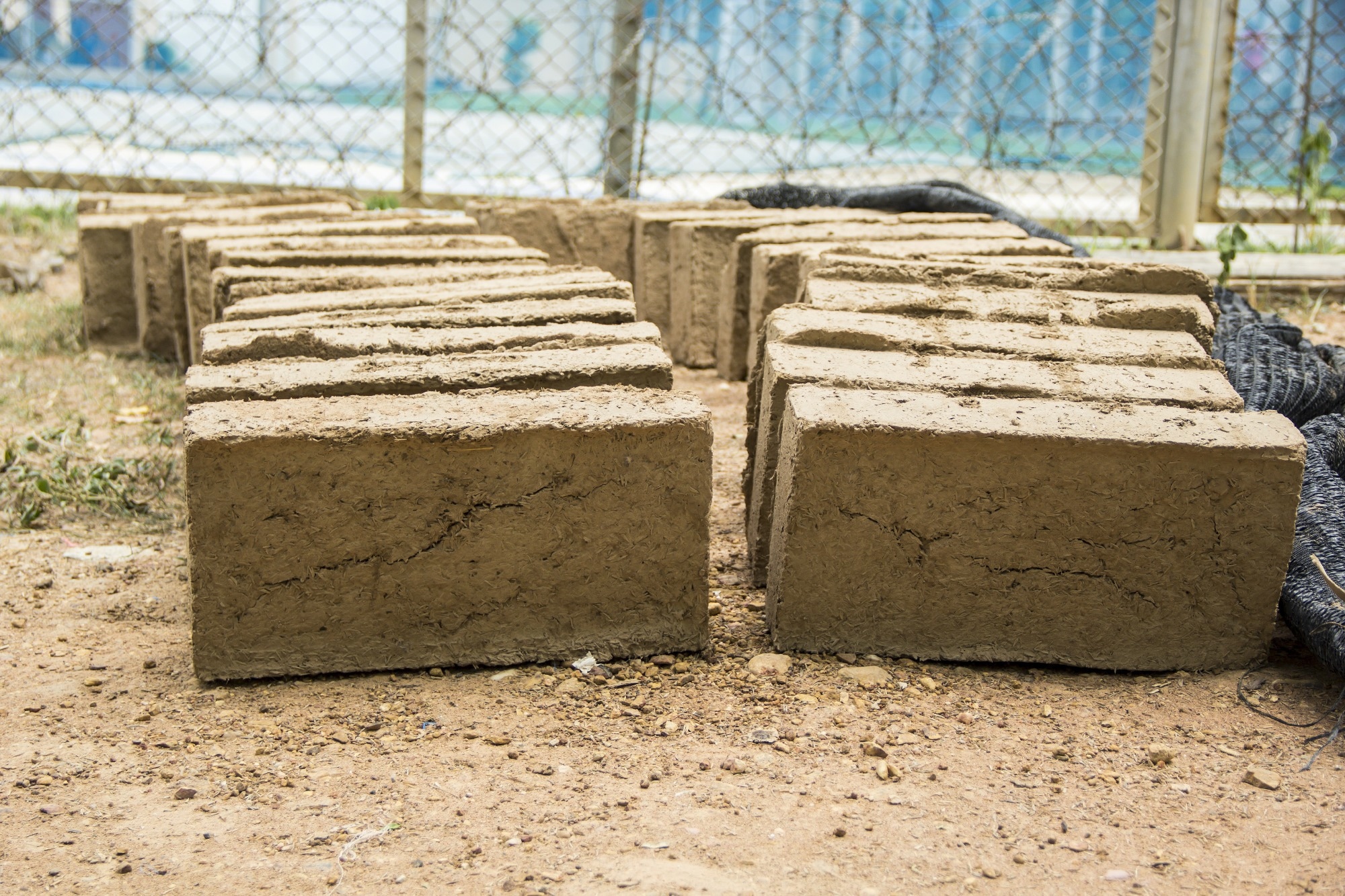Reviewed by Frances BriggsJul 23 2025
Scientists have found that recycled glass and lime can strengthen compressed earth blocks. This could be a sustainable alternative to cement for eco-friendly, durable construction materials.

Image Credit: Ton Ponchai/Shutterstock.com
Researchers at the University of Portsmouth have shown that powdered recycled glass can effectively stabilize compressed earth blocks. Their findings, published in Discover Civil Engineering, suggest that combining recycled glass with lime could reduce reliance on traditional cement while maintaining strength and durability.
Compressed earth blocks are produced by mixing soil with water and compacting the material under high pressure. Cement is commonly added to improve the blocks’ mechanical properties, but its production has a high environmental impact.
The Portsmouth team tested whether recycled glass, a widely available industrial waste product, could be a viable alternative for stabilization.
The scientists created compressed earth blocks with recycled waste glass particles (RWGP) at varying ratios ranging from 0 % to 25 %. They assessed their material performance over 28 days, analyzing changes to the microstructure with an electron microscope and assessing the blocks' mechanical strength and water absorption.
We're seeing an increased demand for the use of recycled industrial waste as sustainable building and construction materials so we wanted to assess the properties of compressed earth blocks using recycled glass particles.
Dr. Muhammad Ali, Study Co-Author, Associate Professor, Materials and Environmental Innovation, School of Civil Engineering and Surveying, University of Portsmouth
They tested various parameters at each percentage level. They assessed the resistance of the blocks to breaking when compressed, and determined the maximum stress the block could withstand while being stretched or pulled, before breaking or becoming deformed.
After testing blocks with varying mixes using lime and recycled waste glass, we found that a composition of 10 per cent lime and 10 per cent recycled glass particles produced the strongest blocks with no cracking under intense pressure.
Dr. Muhammad Ali, Study Co-Author, Associate Professor, Materials and Environmental Innovation, School of Civil Engineering and Surveying, University of Portsmouth
The highest compressive strength of 5.77 MPa was achieved with 10 % recycled waste glass particles (RWGP) and 10 % lime compressed earth blocks (CEB). In comparison, the unstabilized specimens achieved 3.03 MPa after 28 days of curing, indicating a 90 % improvement.
The highest tensile strength of 0.52 MPa was achieved with 10 % RWGP and lime CEBs, while unstabilized specimens achieved 0.40 MPa after 28 days of curing.
Microscopy revealed that the 10 % glass and lime mix produced a dense structure free of microcracks. However, microcracks began to appear at higher glass proportions of 25 %, demonstrating the optimum stability of a 10 % blend.
Future research will involve examining these blocks further by investigating their thermal stability and durability.
Journal Reference:
Danso, H., et al. (2025) Physico-mechanical properties of compressed earth blocks stabilized with recycled waste glass particles and lime. Discover Civil Engineering. doi.org/10.1007/s44290-025-00269-x.